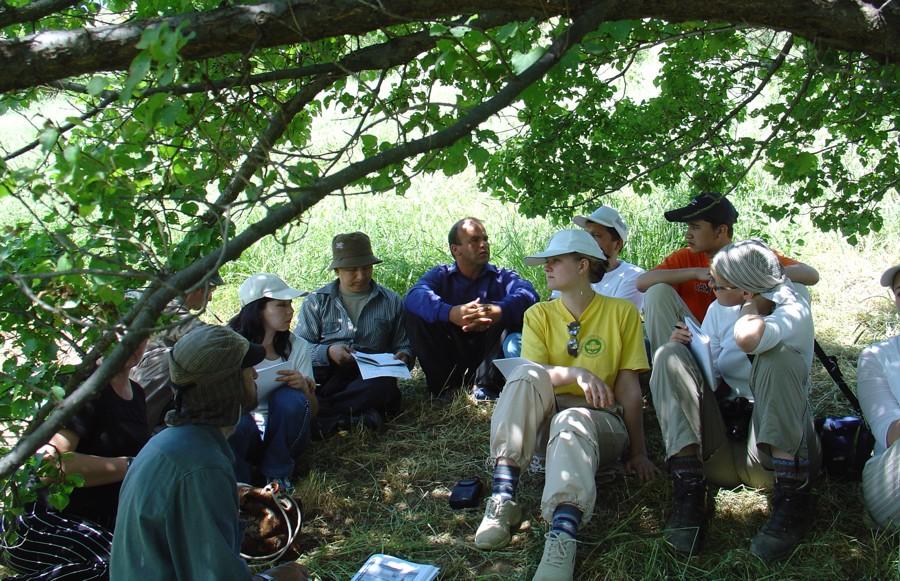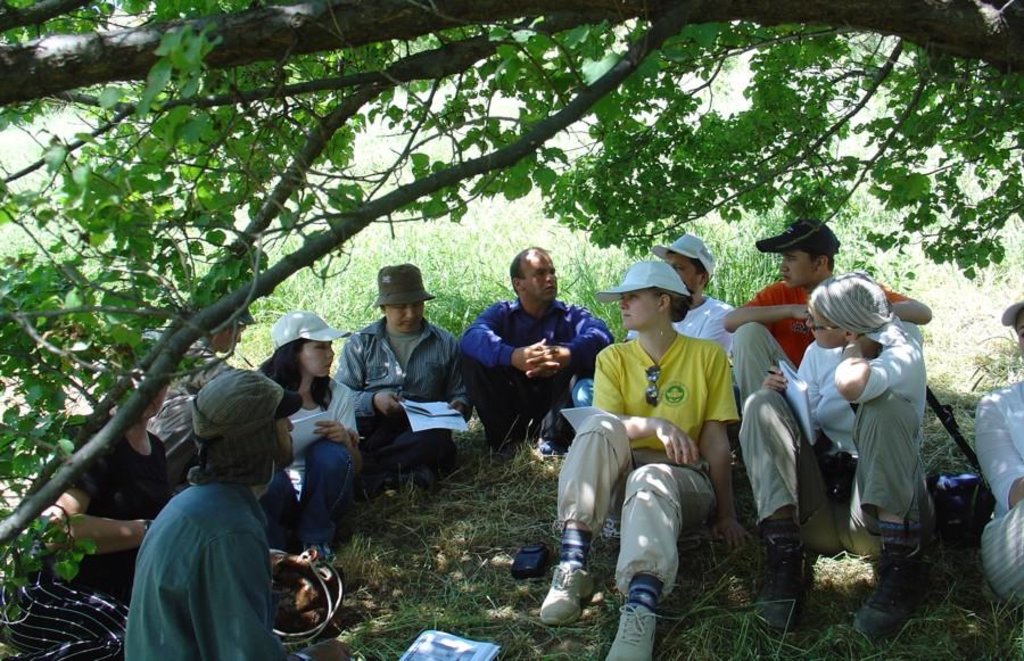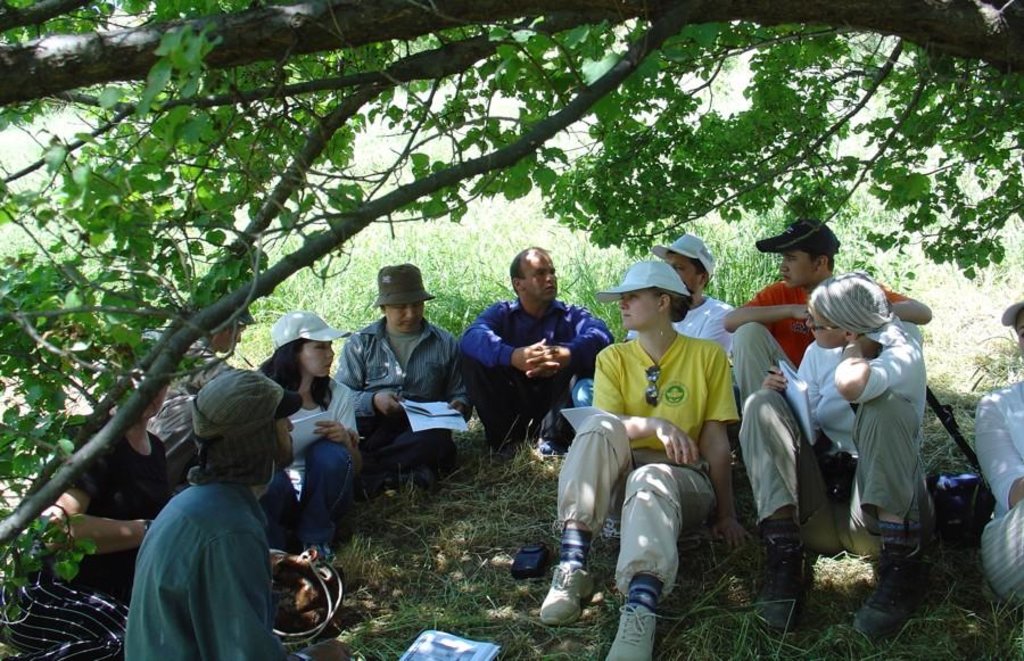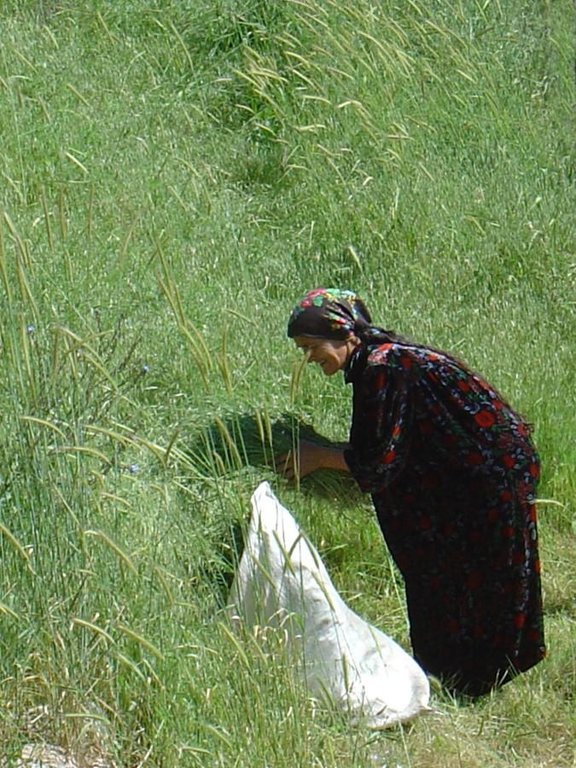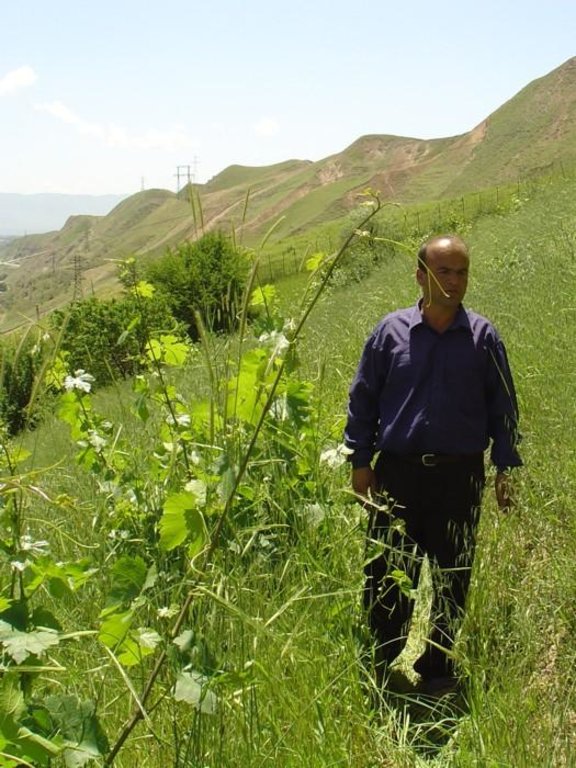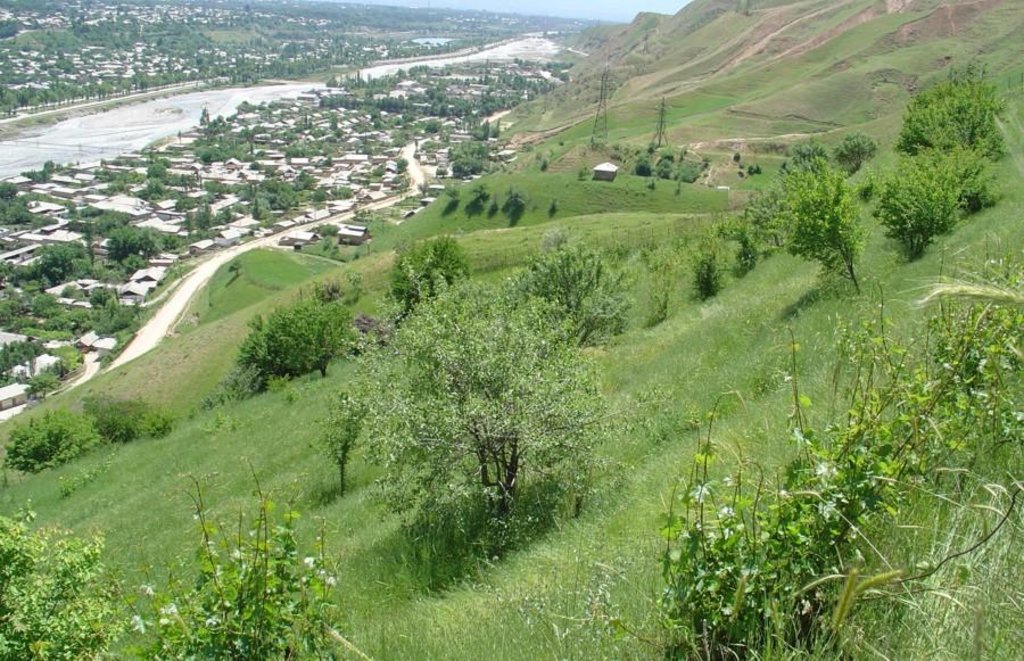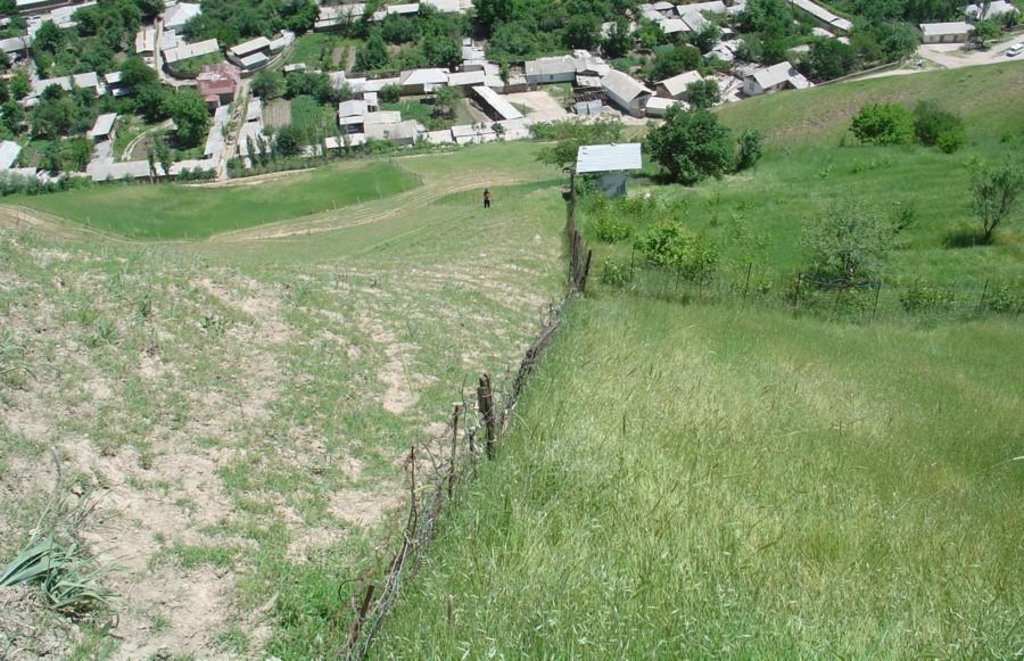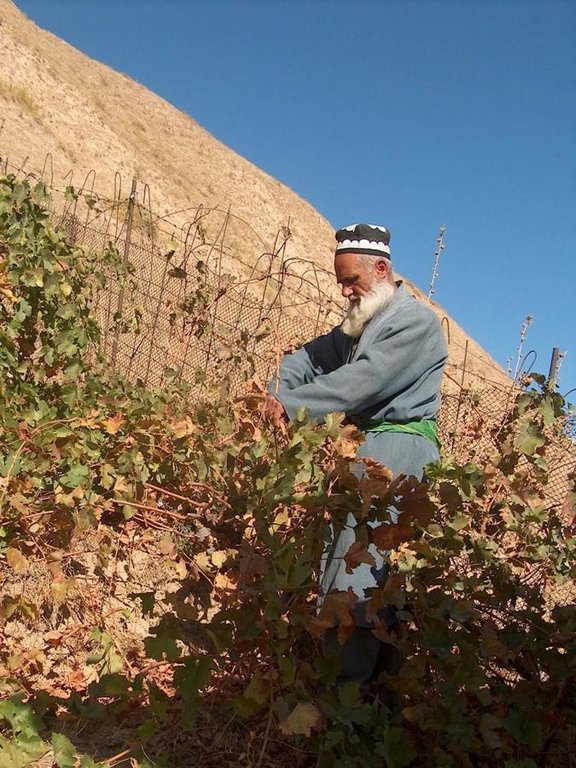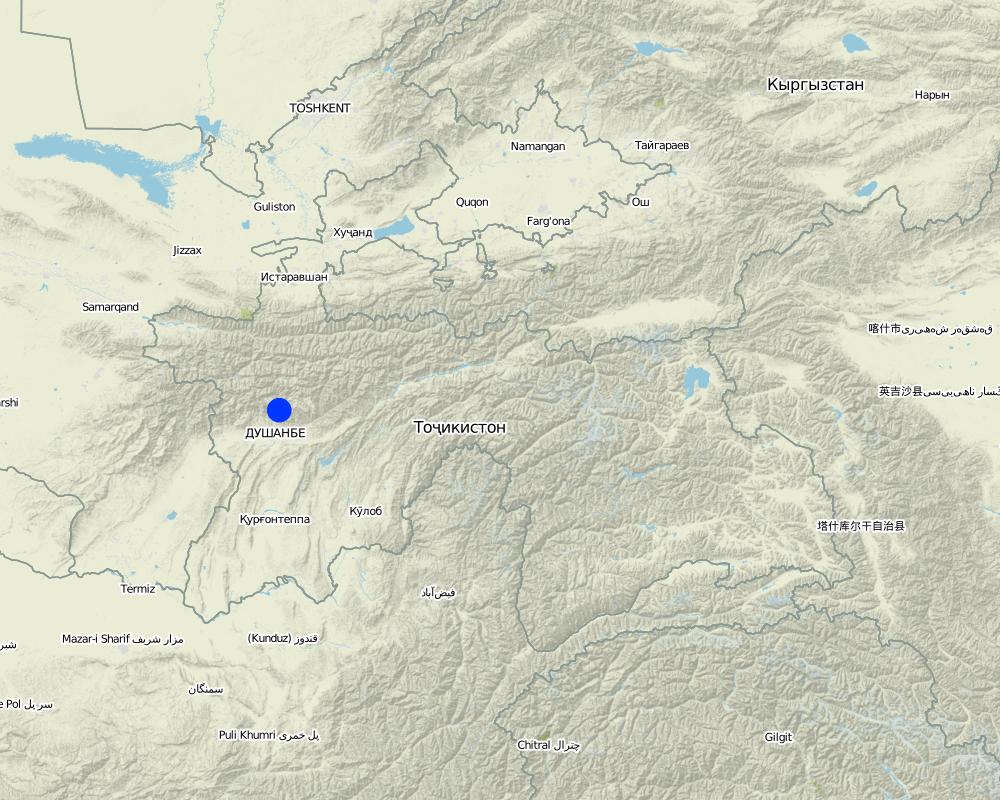Farmer innovation and self-help group [Tadjikistan]
- Création :
- Mise à jour :
- Compilateur : Murod Ergashev
- Rédacteur : –
- Examinateurs : Alexandra Gavilano, David Streiff
approaches_2661 - Tadjikistan
- Résumé complet en PDF
- Résumé complet en PDF pour impression
- Résumé complet dans le navigateur
- Résumé complet (non formaté)
- Farmer innovation and self-help group: 2 novembre 2021 (public)
- Farmer innovation and self-help group: 4 avril 2018 (inactive)
- Farmer innovation and self-help group: 8 août 2017 (inactive)
- Farmer innovation and self-help group: 7 août 2017 (inactive)
- Farmer innovation and self-help group: 5 juillet 2017 (inactive)
Voir les sections
Développer tout Réduire tout1. Informations générales
1.2 Coordonnées des personnes-ressources et des institutions impliquées dans l'évaluation et la documentation de l'Approche
exploitant des terres:
Sharif Aliev family
Khagatai Village, Rayon of Varzob
Tadjikistan
Nom du ou des institutions qui ont facilité la documentation/ l'évaluation de l'Approche (si pertinent)
CAMP - Central Asian Mountain Partnership (CAMP - Central Asian Mountain Partnership) - Kirghizistan1.3 Conditions relatives à l'utilisation par WOCAT des données documentées
Le compilateur et la(les) personne(s) ressource(s) acceptent les conditions relatives à l'utilisation par WOCAT des données documentées:
Oui
1.4 Références au(x) questionnaire(s) sur les Technologies de GDT
2. Description de l'Approche de GDT
2.1 Courte description de l'Approche
An innovative land user, assisted by a self-help group has overcome many administrative and technical problems to establish a fruit garden on previously degraded communal grazing land.
2.2 Description détaillée de l'Approche
Description détaillée de l'Approche:
Aims / objectives: Although in the 1980s the soviet government supported the establishment of private gardens in specified areas, the lack of irrigation water and suitable land often restricted this process. That was the case for Khagatai village, situated on the narrow valley floor of the Varzob River, below steep loess slopes. This marginal area is used for grazing and shows severe signs of water erosion; the hillsides are considered to be of little agricultural value. In the early 1980s, widespread unemployment evidently had the effect of stimulating people to use their own initiative. In 1982, one innovative farmer started to fence-off an area of half a hectare to establish a private fruit garden on the degraded grazing land. Some say that the fencing of plots for private fruit and hay production is a traditional practice - abandoned after the 1950s - but taken up again recently to re-establish rights to individual plots. The practice is widespread in the higher villages of Varzob, where the farmer noted it and decided to set up his own plot. When it came to practical implementation, despite the land user having five sons, the labour-intensive terracing was only completed thanks to the voluntary assistance of relatives and friends, a tradition locally known as 'hashar'. At first, when his initiative began to take shape on land officially owned by a state farm, no action was taken. However, the change in land management quickly showed positive productive results, and it may have been through jealousy that the people of Khagatai village then reported the case to the authorities. The watering of the garden on the unstable loess slope in the immediate vicinity of the village, and the consequent risk of landslides, was put forward as the reason for the complaint. The authorities opened an investigation and a number of newspaper articles were written about the case.
Methods: Since independent decision making was not common in the soviet states, and rapid degradation of newly irrigated lands on the loess deposits was a big issue, the case of this fruit garden attracted a lot of attention. However, when they observed the improved state of the vegetation on the plot, the authorities finally allowed the farmer to continue. In 1993 the prohibition on private cultivation of land was lifted in order to reduce problems of food shortage caused during the civil war that followed independence. It was during this time that four other land users from Khagatai village spontaneously began to imitate this practice.
2.3 Photos de l'approche
2.5 Pays/ région/ lieux où l'Approche a été appliquée
Pays:
Tadjikistan
Région/ Etat/ Province:
Khagatai
Autres spécifications du lieu :
Varzob
Map
×2.6 Dates de début et de fin de l'Approche
Indiquez l'année de démarrage:
1982
2.7 Type d'Approche
- traditionnel/ autochtone
2.8 Principaux objectifs de l'Approche
To establish an orchard with grape vines, fruit trees and fodder crops for private use.
The SLM Approach addressed the following problems: The land in question is part of a communal grazing area and property rights are officially with Khagatai village (in Soviet times with a state farm). Uncontrolled grazing on communal lands has resulted in overgrazing, and thus to progressive water erosion on the steep loess deposits. No attention was paid by the local authorities to soil and water conservation measures in areas considered to be of low agricultural potential.
2.9 Conditions favorisant ou entravant la mise en œuvre de la(des) Technologie(s) appliquée(s) sous l'Approche
normes et valeurs sociales/ culturelles/ religieuses
- entrave
Jealousy of other village members, who didn't like another land user fencing off a plot in communal grazing land.
Treatment through the SLM Approach: Others became convinced after the change in land use. Newspaper articles on the case also helped to form public opinion.
disponibilité/ accès aux ressources et services financiers
- entrave
All inputs had to be provided by the land user himself.
Treatment through the SLM Approach: Creative ways were developed to provide material for fencing, for transportation of irrigation water and for access to manure.
cadre institutionnel
- entrave
Private initiatives on state land were not encouraged under the soviet system.
Treatment through the SLM Approach: Activities tended to start on marginal land that was of little agronomic interest to state farms.
cadre juridique (régime foncier, droits d'utilisation des terres et de l'eau)
- entrave
No individual property rights.
Treatment through the SLM Approach: In soviet times the land belonged to a state farm. Today the land belongs to Khagatai village: efforts to achieve official
connaissances sur la GDT, accès aux supports techniques
- entrave
For the establishment of the orchard irrigation water was needed. This had to be brought 200 m up a steep slope.
Treatment through the SLM Approach: Water in old inner tubes was transported to the orchard by donkey.
autre
- entrave
Availability of labour: Construction of terraces for tree planting is very labour intensive.
Treatment through the SLM Approach: Voluntary work of relatives and friends.
3. Participation et rôles des parties prenantes impliquées dans l'Approche
3.1 Parties prenantes impliquées dans l'Approche et rôles
- exploitants locaux des terres / communautés locales
Mainly men participated: Women are not usually expected to carry out field activities for cultural reasons. The coffee harvest is the only activity where men and women work together in the field.
3.2 Participation des exploitants locaux des terres/ communautés locales aux différentes phases de l'Approche
| Participation des exploitants locaux des terres/ communautés locales | Spécifiez qui était impliqué et décrivez les activités | |
|---|---|---|
| initiation/ motivation | auto-mobilisation | individual land user; the initiative was initiated by an individual land user |
| planification | auto-mobilisation | step by step |
| mise en œuvre | auto-mobilisation | land user; the project was implemented by the individual land user, relatives and neighbours participated voluntarily in terrace construction |
| suivi/ évaluation | auto-mobilisation | by the individual land user; the project is monitored and evaluated by the individual land user |
| Research | interactive | post-implementation documentation (participatory) |
3.4 Prises de décision pour la sélection de la Technologie/ des Technologies
Indiquez qui a décidé de la sélection de la Technologie/ des Technologies à mettre en œuvre:
- les exploitants des terres seuls (auto-initiative)
Expliquez:
Decisions on the method of implementing the SLM Technology were made by by land users alone (self-initiative / bottom-up)
4. Soutien technique, renforcement des capacités et gestion des connaissances
4.1 Renforcement des capacités/ formation
Une formation a-t-elle été dispensée aux exploitants des terres/ autres parties prenantes?
Non
4.2 Service de conseils
Les exploitants des terres ont-ils accès à un service de conseils?
Oui
- through interaction of land users
Décrivez/ commentez:
Key elements: Observations, farmer-to-farmer exchange of ideas.
4.3 Renforcement des institutions (développement organisationnel)
Des institutions ont elles été mises en place ou renforcées par le biais de l'Approche?
- non
4.4 Suivi et évaluation
Le suivi et l'évaluation font ils partie de l'Approche? :
Oui
Commentaires:
Bio-physical aspects were ad hoc monitored by land users through observations; indicators: growth of seedlings
Economic / production aspects were ad hoc monitored by 0 through observations; indicators: comparison of yields between different years
no. of land users involved aspects were ad hoc monitored by 0 through observations; indicators: None
There were few changes in the Approach as a result of monitoring and evaluation: There were a few changes due to the observations made by the land user: he started to apply supplementary irrigation to the tree seedlings, as well as applying manure each year.
4.5 Recherche
La recherche a-t-elle fait partie intégrante de l’Approche?
Oui
Donnez plus de détails et indiquez qui a mené ces recherches:
There had been no research until the identification and documentation of this initiative through a Tajik-Swiss project under the framework of the National Centre of Competence in Research (NCCR) North-South (coordinated by the the Centre for Development and Environment, Switzerland).
5. Financement et soutien matériel externe
5.1 Budget annuel de la composante GDT de l'Approche
Commentez (par ex. principales sources de financement/ principaux bailleurs de fonds):
Approach costs were met by the following donors: other (land user/private): 100.0%
5.2 Soutiens financiers/ matériels fournis aux exploitants des terres
Les exploitants des terres ont-ils reçu un soutien financier/ matériel pour la mise en œuvre de la Technologie/ des Technologies?
Non
5.3 Subventions pour des intrants spécifiques (incluant la main d'œuvre)
Commentaires:
All the inputs were fully financed by the land user himself. This included hand tools, fruit tree seedlings, vines, manure, supplementary irrigation, water transport by donkey and by car.
5.4 Crédits
Des crédits ont-ils été alloués à travers l'Approche pour les activités de GDT?
Non
5.5 Autres incitations ou instruments
D'autres incitations ou instruments ont-ils été utilisés pour promouvoir la mise en œuvre des Technologies de GDT?
Non
6. Analyses d'impact et conclusions
6.1 Impacts de l'Approche
Est-ce que l'Approche a aidé les exploitants des terres à mettre en œuvre et entretenir les Technologies de GDT?
- Non
- Oui, un peu
- Oui, modérément
- Oui, beaucoup
There has been a significant, though localised, improvement in soil and water management.
Est-ce que l'Approche a autonomisé les groupes socialement et économiquement défavorisés?
- Non
- Oui, un peu
- Oui, modérément
- Oui, beaucoup
Did other land users / projects adopt the Approach?
- Non
- Oui, un peu
- Oui, modérément
- Oui, beaucoup
Other land users from Khagatai village have adopted the system on the same hillside. They started fencing-off plots in the 1990s during the civil war. At that time many people were unemployed, and labour was therefore available. Furthermore there was a shortage in food supplies and people relied on . It was very unusual during the soviet times for a villager to take the initiative to establish a private plot on state land. However in this example, the success in establishing a vineyard on an overgrazed hill convinced the administration of its worth. Other land users have now followed this approach.
Did the Approach lead to improved livelihoods / human well-being?
- Non
- Oui, un peu
- Oui, modérément
- Oui, beaucoup
Did the Approach help to alleviate poverty?
- Non
- Oui, un peu
- Oui, modérément
- Oui, beaucoup
6.2 Principale motivation des exploitants des terres pour mettre en œuvre la GDT
- augmenter la production
- conscience environnementale
- well-being and livelihoods improvement
6.3 Durabilité des activités de l'Approche
Les exploitants des terres peuvent-ils poursuivre ce qui a été mis en œuvre par le biais de l'Approche (sans soutien extérieur)?
- oui
Si oui, décrivez de quelle manière:
Because this approach is based on local initiatives there is no reason why it should not be sustainable. The insecure land use rights are the only potential risk to the continuation of the activities.
6.4 Points forts/ avantages de l'Approche
| Points forts/ avantages/ possibilités du point de vue de l'exploitant des terres |
|---|
| Rehabilitation of marginal land for production and generation of additional income. (How to sustain/ enhance this strength: Give property rights to land users to motivate further investments in soil and water conservation/production.) |
| Points forts/ avantages/ possibilités du point de vue du compilateur ou d'une autre personne ressource clé |
|---|
| Bottom-up approach: independent decision making by the individual land user based on dynamic and flexible responses as required. (How to sustain/ enhance this strength: Give property rights to land users to motivate further investments in soil and water conservation/production.) |
6.5 Faiblesses/ inconvénients de l'Approche et moyens de les surmonter
| Faiblesses/ inconvénients/ risques du point de vue du compilateur ou d'une autre personne ressource clé | Comment peuvent-ils être surmontés? |
|---|---|
| Current systems of land ownership, currently the land belongs to Khagatai. | Provide land ownership to the farmers. |
| Not all farmers can apply this technology since it is location specific. | Identify if fodder production (cut-and-carry) would be more attractive than open grazing; allocate land to the farmers. |
| Only families with sufficient labour resources can establish such a garden by themselves. | Incentives from the state or other organisations are needed. |
| Since it is an initiative of an individual land user, the SWC technology has not been documented so far, nor evaluated, and lessons learned have not been spread among the land users. | Documentation and spreading of lessons learned. |
Liens et modules
Développer tout Réduire toutLiens
Aucun lien
Modules
Aucun module trouvé


